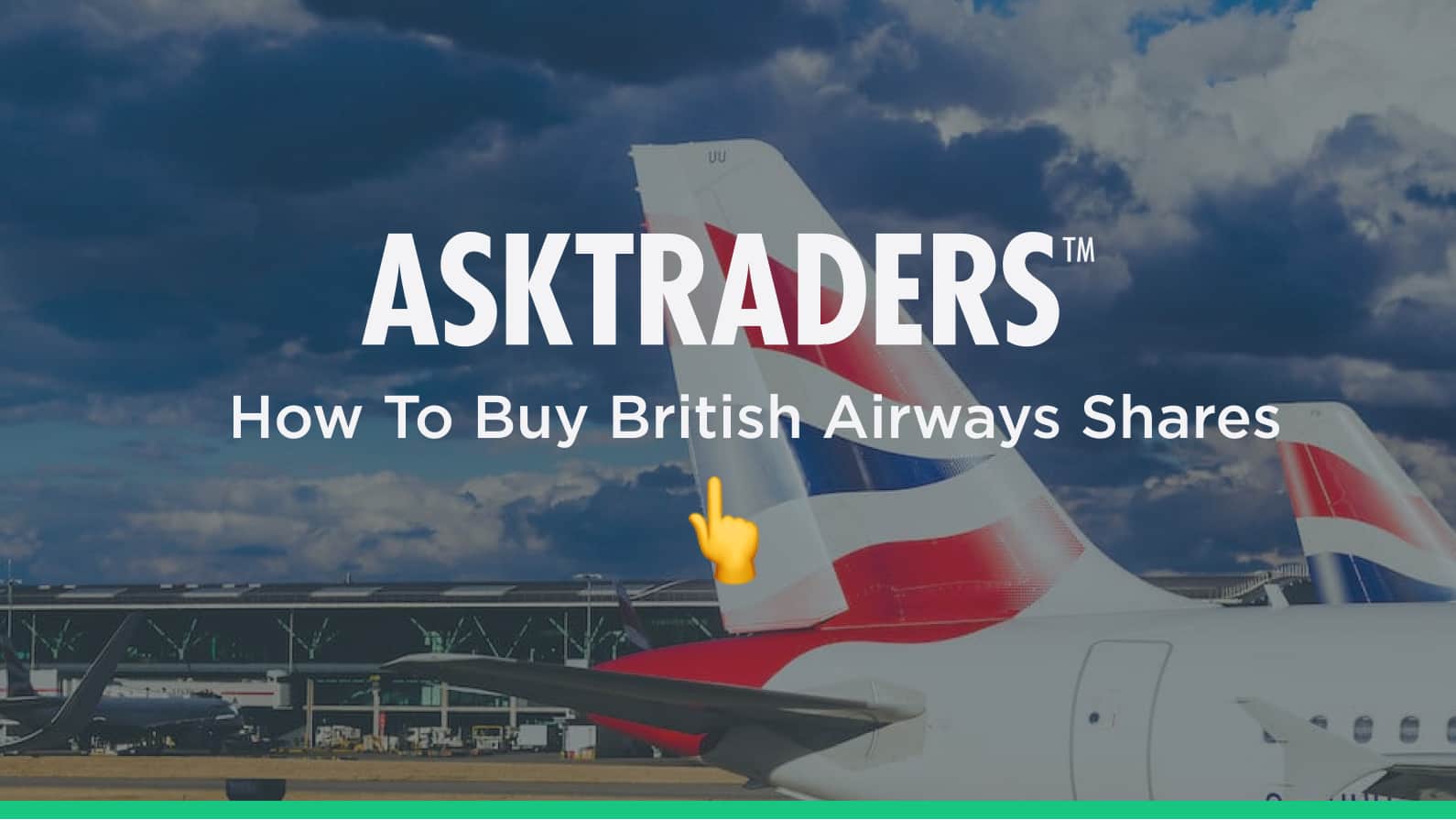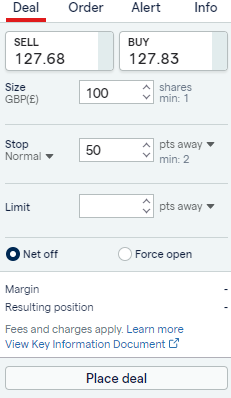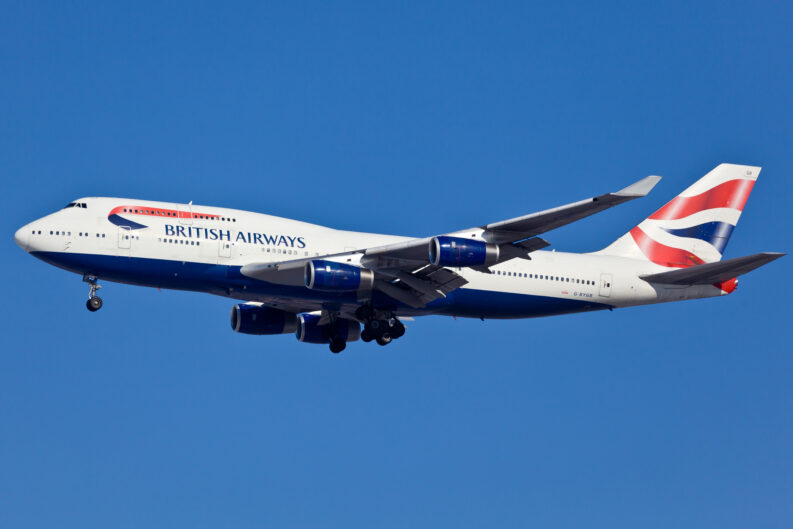For those looking to buy British Airways shares, the way to gain exposure is via the parent company IAG. That means that when you buy BA shares (ticker LON: IAG) you are also gaining exposure to a wider group.
British Airways aircraft and staff are part of a larger company, International Consolidated Airlines Group S.A. (IAG), which also includes carriers such as Iberia and Aer Lingus. Between them, the airlines in the group make up one of the world’s largest airline groups. IAG has over 500 aircraft and flies tens to hundreds of millions of passengers to more than 200 destinations each year.

Steps to Buy British Airways (IAG) Shares
The traditional model for the airline industry has been shaken up in recent years. One notable trend is that of national carriers forming alliances to ensure that they can offer a truly global service.
Airline stocks offer a way to capture exposure to the mood of the wider stock market, with companies such as British Airways heavily exposed to fluctuations in demand from corporate clients and the public.
Whether you think that the IAG share price will go up or down, entering into trades is as easy as clicking a button.
Research IAG Shares
No one can be certain about what direction the IAG share price will go, but you can tilt the scales in your favour by being as fully prepared as possible. Good brokers have extensive libraries of video and written materials, which can help you get the best out of your trading.
For those looking to apply fundamental analysis techniques, the IAG financial statements can be accessed online, and we have a comprehensive overview of IAG shares that can be used to analyse the most recent few years of data, along with analyst price targets. These offer a chance to dig into the granular details of the firm’s operations and its potential for growth.
Find a Broker
There are a lot of good brokers in the market. Finding one that suits your preference is made easier by the availability of demo accounts, which allow you to test the service by trading virtual funds.
One key point to remember is the need to use a broker regulated by a Tier-1 regulator, such as the Financial Conduct Authority (FCA).
Open and Fund an Account
Once you’ve chosen a broker, there is some online form filling to complete. This is to ensure that the broker complies with ‘client protection’ rules. Working through the contact info can take a few minutes, but it is designed with your interests in mind.
The process of funding your account also takes next to no time to complete. Brokers offer a variety of payment methods. The fastest involve bank transfers or debit/credit card transfers and take no longer than making a payment to complete some online shopping.
Once the funds are confirmed, you are ready to start trading.
Set Order Types
The process of booking a trade is quite simple. The trading platform will offer markets in all sorts of assets, and once you select the one for IAG shares, you’re likely to see a monitor like the one below.

With this broker, IAG, it’s just a case of entering the amount you want to trade; then the direction of the trade, ‘buy’ or ‘sell’; then, if you want to, adjust the order to include a ‘stop-loss’ and/or ‘take profit’ limit on your instruction. These help you manage the risks associated with price moving against you or in a particularly volatile manner.
Select and Buy IAG Shares
As this trade is not using leverage, clicking ‘Place Deal’ will see IAG shares credited to your portfolio. There will be a corresponding deduction from your cash balance. The value of your IAG holding will fluctuate in line with the live market price.
Once you decide to close out the trade, this process will simply be reversed by clicking on the position and clicking ‘Close Position’. At that point, the profit/loss on the trade will be calculated according to how the price has moved in the intervening period.

Choosing a broker is a personal choice, but if you would like to consider the thoughts of some reviews by expert traders, then that can be done here.
Fees When Investing In IAG
The entry and exit price level will be your major concern, but other fees also need to be factored in.
The longer the anticipated holding period, the more likely you’re going to find it more cost-effective to hold the position as shares. Shorter-term strategies would more likely benefit from being carried out using CFDs.
A rough estimate is that if you’re holding an equity for more than four to six weeks, the numbers start to favour a buy-and-hold-style share transaction. A report to help you make that decision can be found here.
Your account’s base currency may not be in GBP. If that’s the case, then a purchase of UK-listed IAG, which is priced in GBP, would need to be converted into the base currency. This introduces another frictional cost that you may be able to avoid by doing some research on which broker to use.
YOUR CAPITAL IS AT RISK
IAG Shares: The Basics
As a result of the international nature of IAG, the firm is incorporated in Spain but listed on two different stock exchanges: the LSE in the UK (LON: IAG) and the Madrid Stock Exchange (BME: IAG). The shares were first listed when the firm was founded in 2011 when BA and Iberia merged.
The dual-listing makes the stock easier to buy for those investors located in either London or Madrid and means that the firm is a constituent member of the flagship equity indices of both countries, the FTSE 100 and Spanish IBEX 35 index.
The price of shares on the two different exchanges trades in line with each other. The shares are different from each other but represent a claim of ownership on the same underlying asset, IAG.
An additional layer of complexity is added by one listing being in pounds sterling and the other in euros. This makes it easier for investors who hold their wealth in both base currencies to buy the stock, but it means that comparing the two listed stocks involves factoring in foreign exchange rates.
Due to the headwinds facing the firm following the pandemic, IAG hadn’t paid a dividend for a few years, although that has returned for investors, and due to be paid in September 2024. It will be worth keeping an eye on how the dividend payout continues, but there is clearly a return from the company in delivering an additional shareholder value by means of income.













